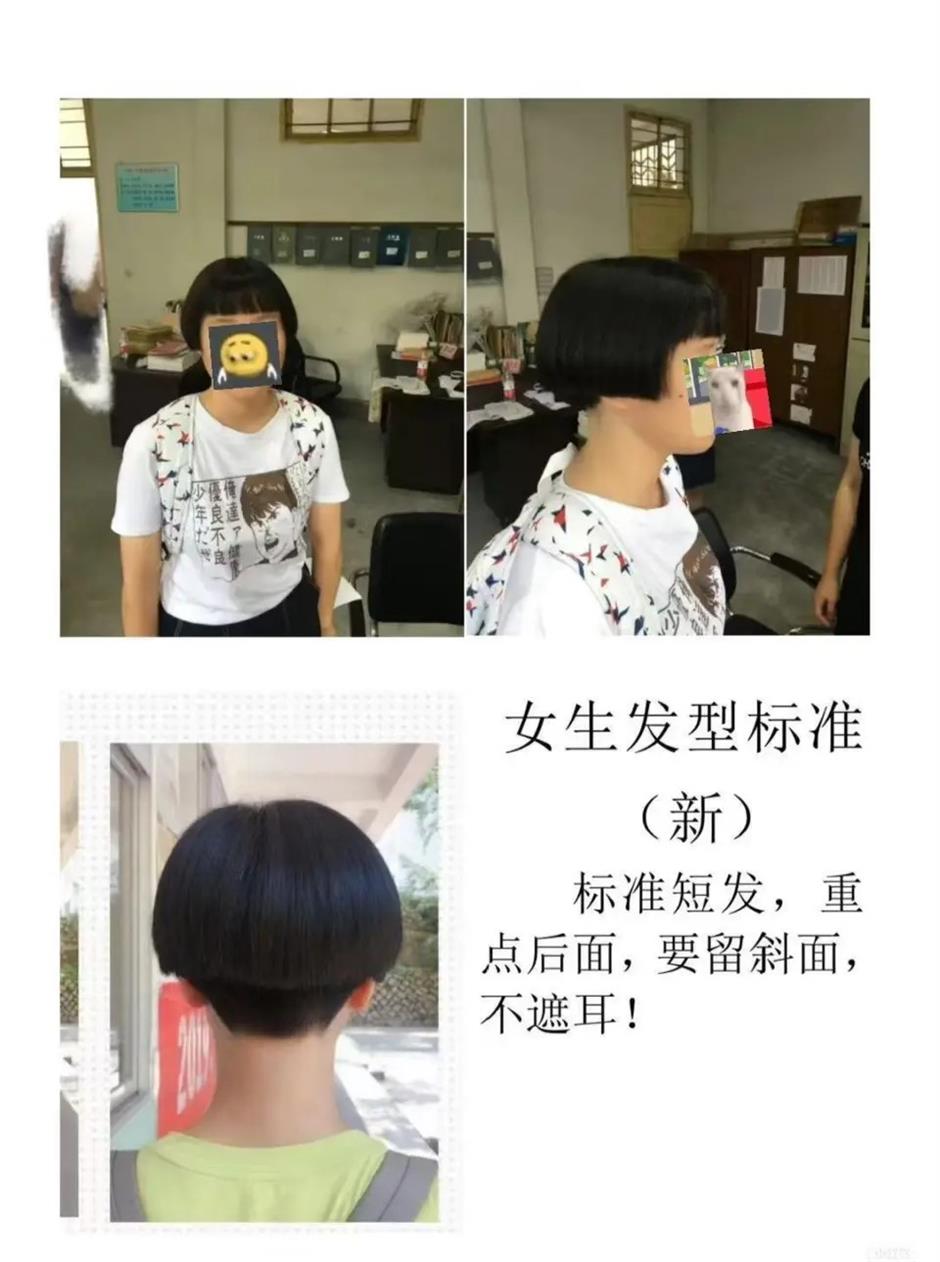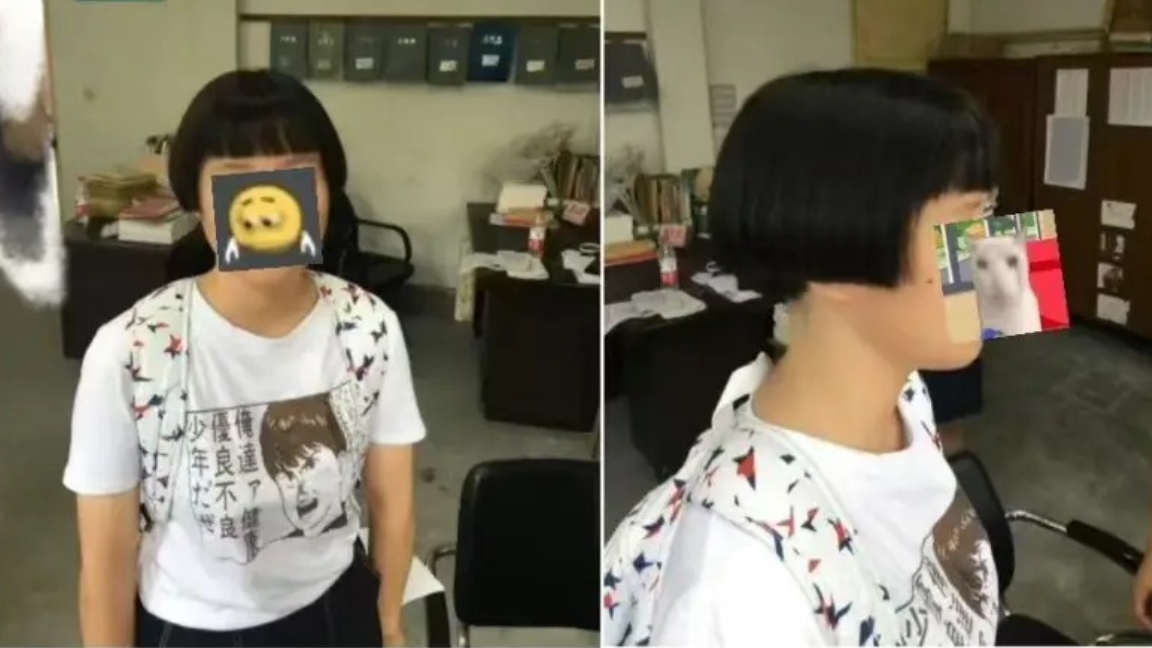
It's fine for a middle school to regulate students' hairstyles as part of its code of conduct, but it should guard against over-regulation that may cause controversy.
On September 17, some students from a middle school in southeast China's Fujian Province revealed that the school had asked all the girl students to embrace the same hairstyle, said to be similar to that of Dora, the character from the famed animation TV show "Dora the Explorer." To be specific, the layered hair in the back of a girl's head must be so cut as to create a 45-degree slope.

The girl's hairstyle in question.
Some reporters learned in an interview with some students that they didn't challenge their school's requirements for girls to have short bob haircuts, but they thought the new standard hairstyle was ugly and indeed hard to groom.
On September 18, Beijing News reported that local education authorities were discussing with the school concerned about how to come up with a better regulation.
Such rigid regulation is not something new. Last year, there were reports that a middle school in Chengdu City, Sichuan Province, had required that boy students' hair be shorter than the thickness (or height) of a finger.
These examples of rigid regulation show the boundary of proper management has somehow been overstepped. To prevent students from coming to school with strange hairstyles is one thing, but requiring everyone to have the exact same hairstyle is quite another.
It may be reasonable to ask a boy student to have a buzz cut and a girl to have a bob cut, but reason becomes rigidity once we ask that a boy's hair must be shorter than the thickness of a finger and that a girl's hair must look like a mushroom with a 45-degree slope in the back.
School education needs discipline, such as abiding by certain codes of conduct, but such discipline should take into consideration that students are not meant to look exactly like each other when it comes to hair styling.

